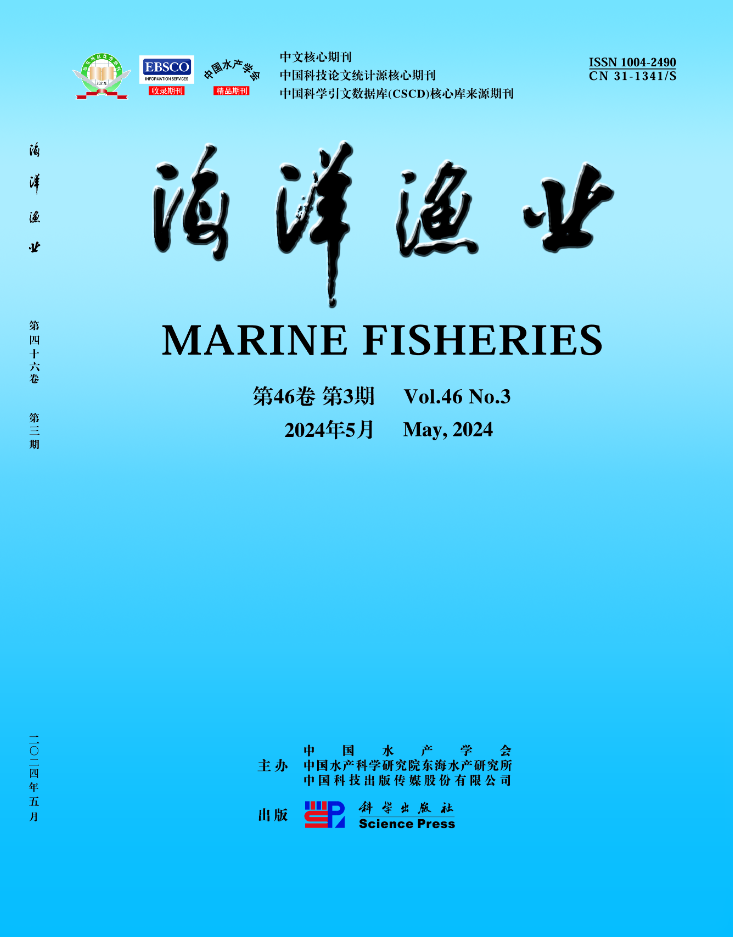MENENTUKAN SWIMMING LAYER DAN DISTRIBUSI IKAN PELAGIS DI LAUT FLORES BAGIAN BARAT DENGAN DETEKSI AKUSTIK
引用次数: 0
Abstract
The purpose of this study determined the swimming layer and distribution of pelagic fish in the waters west of the Flores Sea through acoustic detection. Experimental fishing is a method used with two data analyses: 1) analysis of acoustic data at sampling stations with stationery techniques; and 2) analysis of acoustic data along transects between stations. The detection results at stationery 1 showed a very low abundance of pelagic fish, distributed at layer 4 (150-200 m) at night and suspected to be a large pelagic type of tuna with a small amount. The detection results on stationery 2 and stationery 3 are relatively the same, showing a relatively higher abundance compared to stationery 1. Detection results for transects between stations 1-2, 2-3, 3-4, and 4-5 starting from Dewakang waters to east of Takarawataya waters did not detect schooling fish but only single fish. On transects between stations 5-6 very low abundance, the highest mean abundance of 0.5 fish/1000 m3 was detected at layer 4 (150-200 m). On transects between stations 6-7 the abundance was not too high, the highest mean abundance was detected at layer 3 of 10.8 fish/1000 m3. The transect between stations 7-8 is the highest abundance of all transects, the highest abundance average value detected at layer 3 is 20.3 fish/1000 m3. On transects between stations 8-9 the abundance was not too high, schooling tended to be present in all layers, and the highest mean abundance was detected at layer 4 of 1.3 fish/1000 m3. The results of the study concluded that the abundance of pelagic fish in the western Flores Sea is distributed in layers 3 and 4 (100-200 m). Keywords: Acoustic, distribution, pelagic fish, Flores Sea, layer通过声音探测,确定游泳层和海洋中船舶的分布
本研究的目的是通过声学探测确定弗洛雷斯海西部水域中上层鱼类的游泳层和分布。实验捕鱼是一种采用两种数据分析方法的方法:1)用文具技术分析采样站的声学数据;2)站间横断面声资料分析。在第1层的检测结果显示,中上层鱼类丰度很低,夜间分布在第4层(150-200米),怀疑是数量较少的大型中上层金枪鱼。对文具2和文具3的检测结果相对相同,丰度相对于文具1较高。从Dewakang水域开始至Takarawataya水域以东的1-2、2-3、3-4和4-5站之间的样条检测结果未检测到鱼群,仅检测到单鱼。在丰度非常低的5-6站点之间的样带中,在第4层(150-200 m)检测到最高的平均丰度为0.5条/1000 m3。在6-7站点之间的样带中,丰度不太高,在第3层检测到最高的平均丰度为10.8条/1000 m3。站7-8之间的样带是所有样带中丰度最高的,在第3层检测到的最高丰度平均值为20.3只/1000 m3。在8-9站之间的样带上,丰度不太高,各层都有鱼群现象,平均丰度最高的是第4层,为1.3条/1000 m3。研究结果表明,弗洛雷斯海西部中上层鱼类丰度分布在第3层和第4层(100-200 m)。关键词:声学,分布,中上层鱼类,弗洛雷斯海,层
本文章由计算机程序翻译,如有差异,请以英文原文为准。
求助全文
约1分钟内获得全文
求助全文
来源期刊
自引率
0.00%
发文量
4336
期刊介绍:
“Marine Fisheries”started publication in 1979, it mainly covers original research papers and reviews on basic theories and applications of aquaculture and fisheries, including marine biology, mariculture and reproduction, aquatic diseases and prevention, nutrition and feed of aquatic organisms, fishery ecology and environmental protection, development and conservation of marine fishery resources, fishing tools and methods, preservation and comprehensive utilization of aquatic products, fishery machinery and instruments.

 求助内容:
求助内容: 应助结果提醒方式:
应助结果提醒方式:


